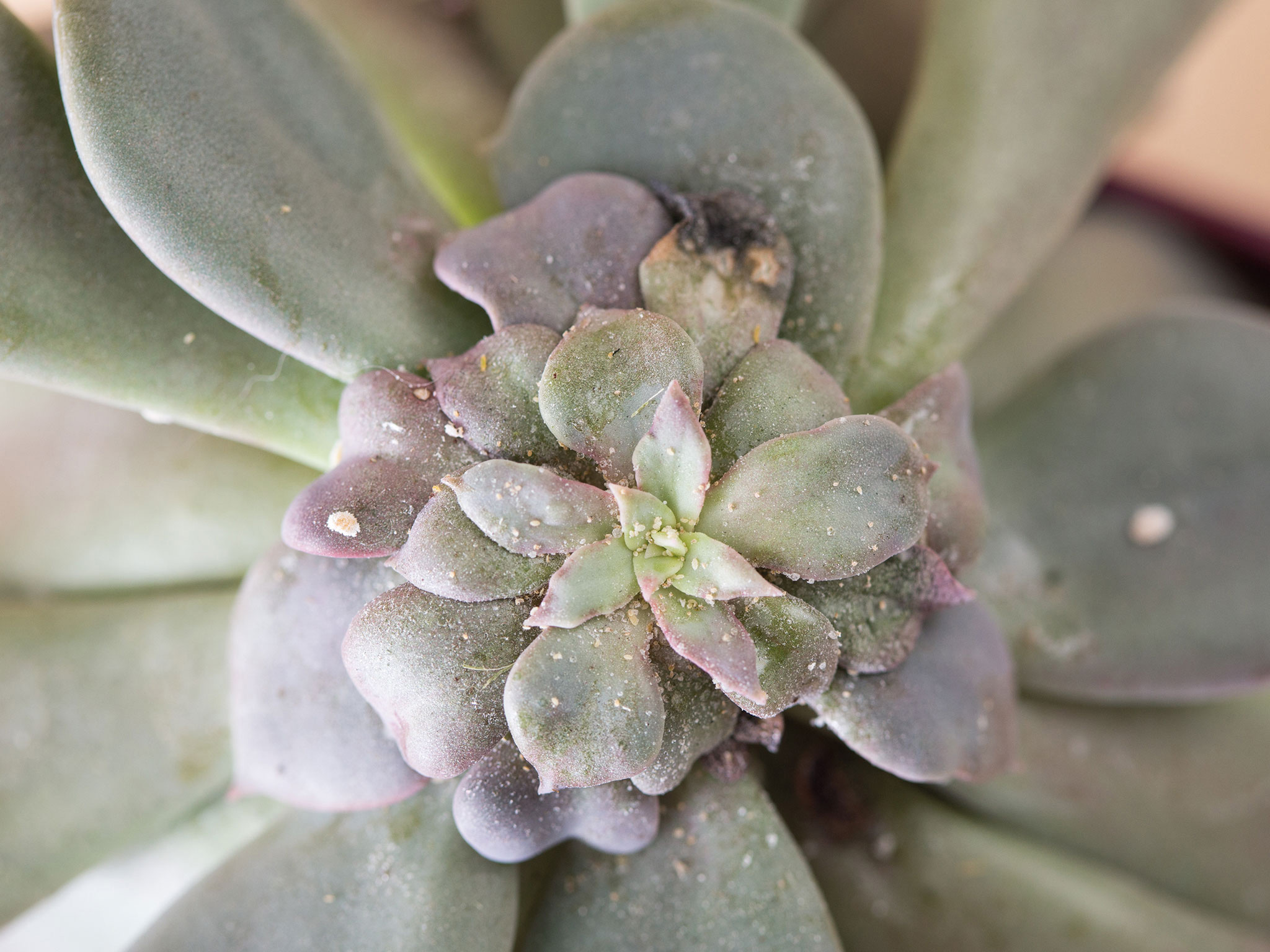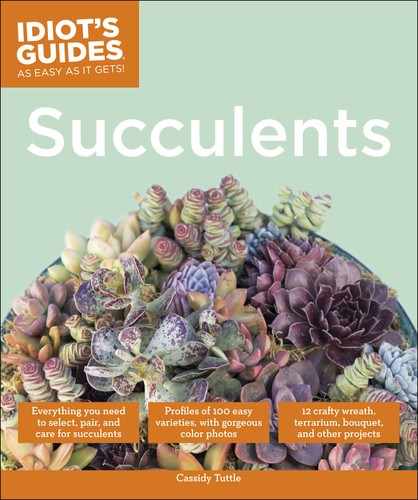Common Pests and Problems
Succulents aren’t prone to bugs or diseases, but if you don’t care for the plants properly, they’ll make their way in. In most cases the plant can be treated and saved, but sometimes the infected plant puts nearby plants at risk. Here are some of the common pests and problems with growing succulents indoors.

Spray the bugs with a dish soap solution to kill them.
Gnats
While gnats won’t do anything to bother your succulents, they reproduce quickly and can be annoying to have in your home. Gnats love wet soil. If you start to have a gnat problem, you are most likely overwatering your succulents and their pots don’t have enough drainage.
Gnats lay eggs in the soil, so let the soil dry out for several days. If the gnats return, spray the soil with several drops of lemon-scented dish soap in about a quart (1l) water.
This should kill any eggs but will not harm the succulent. You can also pour a small amount of 70 percent rubbing alcohol on the soil.
Another technique for getting rid of gnats is to place a small dish of apple cider vinegar with a few drops of dish soap near your succulents. The gnats will be attracted to the sweet smell of the vinegar, and the dish soap will kill them on contact.

These mealybugs have stunted the new growth of this plant as they’ve eaten the leaves.
Mealybugs
These nasty bugs are the most common pest problem for succulents grown indoors. The first sign of mealybugs is a white, fluffy substance on leaves or in crevices between the leaves of your plant. Mealybugs themselves are tiny and brown and very hard to spot. As soon as you see mealybugs on one of your plants, move it away from any others. Mealybugs spread quickly and it’s easy for all of your plants to become infested.
To get rid of mealybugs, spray or pour 70 percent rubbing alcohol anywhere you see the bugs on your succulent. Alcohol can burn or damage the leaves, so rinse them with water about 10 to 15 minutes after application. This will allow the alcohol to kill what’s there without damaging your succulent. You may want to spray it with alcohol every few days to ensure you’ve killed all the bugs.
If the mealybugs don’t go away, repot and replace the soil. Often, they will nest down in the soil around the stem and roots. Getting rid of the infested soil is the best way to eliminate this problem. When you remove the plant, spray the roots with alcohol. If you’d like to avoid repotting, pour alcohol over the soil for the next few waterings to kill any eggs that have been laid in the soil.
Damage from mealybugs usually looks like stunted and misshapen growth. They target the new growth of the plant and like to hide in the areas between the leaves and stem. If your succulent is severely infested with mealybugs, you may want to consider throwing away the plant rather than putting other plants at risk.

Too much much sun can cause browning or sunburn on succulent leaves.
Sunburn
Succulents can be damaged from too much sunlight or direct light that is too hot. Your succulents can get sunburn from being too close to a window that gets direct sunlight. They can also burn easily from being in full sun outdoors for too long if they aren’t acclimated to the heat.
Initial sunburns are white, and it looks like the plant is turning pale. At this point, bringing it into the shade can prevent further damage and scarring. Most likely, though, you’ll see dark spots or even brown, crispy leaves if it gets burned severely. The scars from sunburns won’t go away or heal. Eventually, as the plant grows, those leaves will die and fall off.

Blackening and rot along the stem of a succulent is caused by overwatering.
Rot
There are several reasons a succulent will begin to rot, but the most common reason is overwatering. Some diseases, such as Aloe rust or black mold, can cause succulents to rot as well, but these are quite rare, especially when growing indoors. The earliest sign of rot is softening of the leaves. As it progresses you’ll start to see black spots on the stem or leaves. Eventually the black from the rot will spread to other areas of the plant.
It is hard to save a succulent from rot, especially if it gets very far. The best way is to use a sterile knife or scissors to cut off the top of the plant above any black spots. Check the inside of the stem to ensure this cutting doesn’t have any blackening inside. If it does, continue to cut off the stem until there are no signs of blackening. Wait a few days for the end to callous and then replant the cutting.

Pets love succulents, so keep them out of reach.
Animals
You’ll find that animals are quite attracted to succulents. Mice, raccoons, rabbits, birds, and deer have all been known to take a bite of outdoor succulents from time to time. They can be hard to deter, but the best way to do so is to keep the succulents in a protected area where they are hard to get to.
Slugs and snails can also be a problem outdoors. The smooth skin of succulents is easy for snails to eat. They can eat succulents quickly. You’ll notice some slime as well as an open wound on your succulent. Slug bait is the easiest way to eliminate this problem. Just spread a little on the soil surrounding your succulents.
You’ll likely have problems with your cats and dogs indoors. While some succulents are poisonous and animals stay away, most are quite tasty. It is difficult to keep these animals away from succulents. Keep your succulents up high and out of reach of your pets.
Ants can be a problem both indoors and outdoors. If you see them indoors, they likely caught a ride on some new succulents you purchased. Ants won’t eat your succulents, but they do like to eat the white webs mealybugs create. They end up spreading the mealybugs around and make the mealybug problem worse. You can use traps or other common methods for removing ants to help with this problem.
